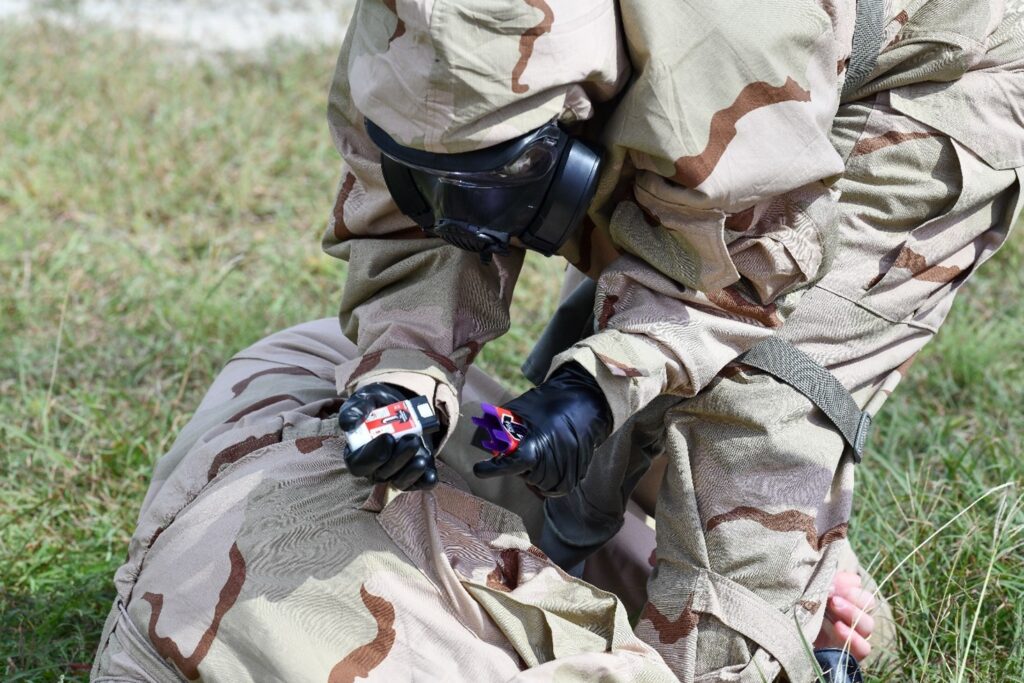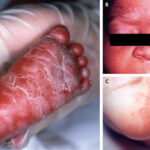The deliberate or accidental release of high-potency opioids as chemical weapons presents a severe public health and national security threat. Synthetic opioids, such as fentanyl and its analogs, are significantly more potent than morphine, with lethal effects manifesting in microgram quantities. The risk is amplified in enclosed environments or mass exposure events, necessitating rapid identification, protective measures, and immediate medical intervention.

Characteristics of High-Potency Synthetic Opioids
High-potency opioids—commonly referred to as fentanyl analogs—include:
- Fentanyl: 50–100 times more potent than morphine
- Carfentanil: 10,000 times more potent than morphine
- Remifentanil, Sufentanil, Alfentanil: Used in clinical anesthesia but hazardous in uncontrolled environments
These agents act rapidly on mu-opioid receptors, depressing respiratory centers and inducing respiratory arrest, coma, and death within minutes of exposure.
Routes of Exposure in Chemical Weapon Incidents
Exposure may occur via several mechanisms:
- Inhalation: Aerosolized opioid particles are rapidly absorbed through the lungs.
- Dermal Contact: Potent opioids can penetrate skin or mucous membranes, especially in humid or occluded environments.
- Ingestion: Less common, but may occur via contamination of food, drink, or surfaces.
- Ocular Exposure: Absorption through conjunctival membranes is possible in aerosol scenarios.
High-Risk Environments
- Confined or poorly ventilated areas
- Scenes of chemical weapon deployment
- Laboratories or storage sites involving illicit drug synthesis
Clinical Presentation of Opioid Toxicity (Opioid Toxidrome)
Hallmark Symptoms
- Profound central nervous system depression
- Respiratory depression or apnea
- Miosis (pinpoint pupils)
- Cyanosis
- Unresponsiveness or coma
Additional Findings
- Bradycardia
- Hypotension
- Pulmonary edema (in some cases)
- Seizures (especially with analogs like acrylfentanyl)
Immediate Actions and Scene Safety
Scene Management Protocol
- Assess Scene Safety: Personnel must not enter without personal protective equipment (PPE).
- Use of Respiratory Protection: NIOSH-approved P100 or N95 respirators are essential for airborne threats.
- Establish Hot, Warm, and Cold Zones: Contain exposure and decontamination areas.
- Evacuate Non-Essential Personnel and restrict access.
- Decontamination: Strip contaminated clothing and irrigate exposed skin/eyes with copious water.
Emergency Medical Response to Suspected Exposure
Prehospital Care
- Airway management: Priority for maintaining oxygenation.
- Administer Naloxone immediately:
- 2 mg IN (intranasal) or IM (intramuscular) may be repeated every 2–3 minutes
- Higher doses (up to 10 mg or more) may be required for fentanyl analogs
Hospital Management
- Supportive ventilation (intubation if necessary)
- Repeat naloxone doses or continuous infusion
- IV access and cardiac monitoring
- Screen for co-ingestants (e.g., benzodiazepines, stimulants)
Naloxone Deployment for Mass Casualty Events
Stockpiling and Accessibility
- First responders and public facilities should maintain intranasal and auto-injector naloxone.
- Distribution to high-risk sites (e.g., airports, public transit hubs)
Naloxone Limitations
- Short half-life (30–90 minutes) versus long-acting opioids
- Requires multiple administrations or infusion in severe cases
Laboratory Confirmation and Forensic Testing
Common Detection Methods
- Liquid Chromatography-Mass Spectrometry (LC-MS)
- Gas Chromatography-Mass Spectrometry (GC-MS)
- Rapid field detection devices can identify fentanyl analogs within minutes
Challenges
- High-potency analogs may evade standard immunoassays
- Cross-contamination risks require stringent chain-of-custody procedures
Occupational Exposure Guidelines for Responders
Recommended PPE
- Gloves: Nitrile or equivalent, double gloving preferred
- Respirators: PAPR or N95 for airborne particles
- Eye protection: Sealed goggles or face shield
- Protective clothing: Impermeable coveralls for high-risk scenarios
Exposure Mitigation
- Immediate washing with soap and water (no alcohol-based gels)
- Medical evaluation if symptoms develop
- Incident reporting and debriefing
Public Health Response and Government Protocols
Strategic National Stockpile (SNS)
- Includes large quantities of naloxone, PPE, and chemical detection tools
- Deployment capabilities for national-scale incidents
Coordination
- Involvement of CDC, FEMA, DHS, and local emergency operations centers
- Activation of Emergency Operations Plans (EOPs) and HazMat protocols
Surveillance
- Syndromic surveillance systems to track opioid-related incidents
- Forensic toxicology to monitor emerging synthetic analogs
Preparedness and Training
Drills and Simulation Exercises
- Conduct regular chemical exposure scenarios involving opioids
- Train EMS, fire, and law enforcement in donning PPE and mass naloxone administration
Community Awareness
- Distribute naloxone and opioid exposure education to the public
- Promote awareness of synthetic opioid risks and response tools
The intentional or accidental release of high-potency opioids as chemical weapons represents a pressing threat to both civilian and occupational populations. Rapid recognition of symptoms, proper use of protective equipment, immediate administration of naloxone, and structured emergency protocols are essential for minimizing morbidity and mortality. Agencies at all levels must remain vigilant, equipped, and prepared to confront this evolving synthetic opioid hazard.

